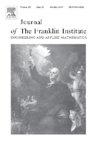A novel quaternion optimization model for imagined speech classification
IF 4.2
3区 计算机科学
Q2 AUTOMATION & CONTROL SYSTEMS
Journal of The Franklin Institute-engineering and Applied Mathematics
Pub Date : 2025-06-07
DOI:10.1016/j.jfranklin.2025.107789
引用次数: 0
Abstract
Imagined speech, characterized by its extensive vocabulary and diverse applications, is a highly promising paradigm in BCI. Multi-channel EEGs are utilized for imagined speech classification. While low rank and sparse representation (LRSR) models have proven useful for EEG processing, they overlook the inter-channel correlations, leading to potential information loss. To address this issue, this paper proposes a quaternion valued LRSR (QLRSR) model for processing the EEGs. Quaternion algebra is a hypercomplex number system extending complex numbers with one real component and three orthogonal imaginary units(i,j,k). Since quaternion can excavate the potential connection of multi-dimensional signals, it is adopted in our QLRSR algorithm for processing muti-channel EEGs. The proposed QLRSR model for imagined speech classification involves two key steps. First, it models sampling points in four-channel EEGs as quaternion-valued numbers, exploiting cross-channel correlations during quaternion operations. Second, the model formulates the QLRSR problem as a quaternion-valued optimization problem. To validate the model's effectiveness, two public datasets are used: Track 3 of the BCI Competition 2020 and the Kara One dataset. By finding the solution of the quaternion valued optimization problem, it is found that the average classification accuracies of our proposed QLRSR model are 64.05 % and 75.46 %, which is higher than the existing models including low rank, sparse, LRSR-based model. Also, the required computational time for performing the classification of the imagined speech via our proposed QLRSR model is 5.12-17.33 % lower than of the aforementioned models. Since QLRSR integrates quaternion algebra into the LRSR-based method, which is more suitable for processing muti-channel signal than LRSR-based method. Hence, our proposed QLRSR model is efficient. Our work in the QLRSR is helpful for the researchers who work on finding a mathematical solution of the quaternion optimization problem. Furthermore, our proposed QLRSR model provides new directions and ideas for BCI and medical rehabilitation field.
基于四元数的虚拟语音分类优化模型
想象语是脑机接口中极具发展前景的一种语言范式,具有词汇丰富、应用广泛等特点。利用多通道脑电图进行想象语音分类。虽然低秩和稀疏表示(LRSR)模型已被证明对脑电图处理有用,但它们忽略了通道间的相关性,导致潜在的信息丢失。为了解决这一问题,本文提出了一种四元数值LRSR (QLRSR)模型来处理脑电图。四元数代数是将复数扩展为一个实分量和三个正交虚单位(i,j,k)的超复数系统。由于四元数可以挖掘多维信号之间的潜在联系,因此我们的QLRSR算法采用四元数处理多通道脑电图。本文提出的用于想象语音分类的QLRSR模型包括两个关键步骤。首先,它将四通道脑电图中的采样点建模为四元数值,利用四元数运算期间的跨通道相关性。其次,该模型将QLRSR问题表述为四元数值优化问题。为了验证模型的有效性,使用了两个公共数据集:2020年BCI竞赛的Track 3和Kara One数据集。通过寻找四元数值优化问题的解,发现我们提出的QLRSR模型的平均分类准确率分别为64.05%和75.46%,高于现有的低秩、稀疏、基于lrsr的模型。此外,通过我们提出的QLRSR模型对想象语音进行分类所需的计算时间比上述模型低5.12- 17.33%。由于QLRSR将四元数代数集成到基于lrsr的方法中,比基于lrsr的方法更适合处理多通道信号。因此,我们提出的QLRSR模型是有效的。我们在QLRSR中的工作对寻找四元数优化问题的数学解的研究人员有帮助。此外,我们提出的QLRSR模型为脑机接口和医疗康复领域提供了新的方向和思路。
本文章由计算机程序翻译,如有差异,请以英文原文为准。
求助全文
约1分钟内获得全文
求助全文
来源期刊
CiteScore
7.30
自引率
14.60%
发文量
586
审稿时长
6.9 months
期刊介绍:
The Journal of The Franklin Institute has an established reputation for publishing high-quality papers in the field of engineering and applied mathematics. Its current focus is on control systems, complex networks and dynamic systems, signal processing and communications and their applications. All submitted papers are peer-reviewed. The Journal will publish original research papers and research review papers of substance. Papers and special focus issues are judged upon possible lasting value, which has been and continues to be the strength of the Journal of The Franklin Institute.

 求助内容:
求助内容: 应助结果提醒方式:
应助结果提醒方式:


